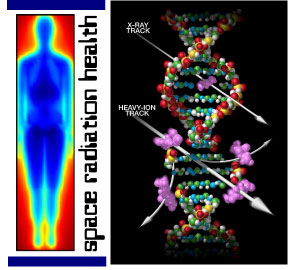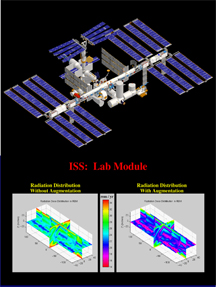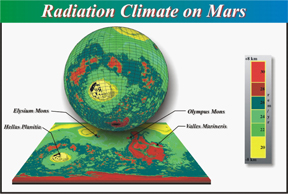 Primary Investigator – Premkumar Saganti
Primary Investigator – Premkumar Saganti
CRESSE environmental modeling promises realistic ground studies of space radiation
Since 1989, studies and predictions of the space radiation environment that can be expected during interplanetary missions have posed significant challenges to the design of robotic and manned missions to the moon and beyond.
 Two major sources of high-energy particulate radiation in outer space are the sun and galactic cosmic rays (GCR) from outside the solar system. Major components of particulate radiation from the sun include protons and electrons. GCR are the nuclei of completely ionized atoms that range from hydrogen (protons) to uranium traveling near the speed of light. The composition is mainly lighter elements, but heavier ions such as iron can have a significant biological impact. The space radiation environment is a mixed radiation field of varios particles with energies that range in energy from keV (1000 electron volts) to TeV (1012 eV) or greater.
Two major sources of high-energy particulate radiation in outer space are the sun and galactic cosmic rays (GCR) from outside the solar system. Major components of particulate radiation from the sun include protons and electrons. GCR are the nuclei of completely ionized atoms that range from hydrogen (protons) to uranium traveling near the speed of light. The composition is mainly lighter elements, but heavier ions such as iron can have a significant biological impact. The space radiation environment is a mixed radiation field of varios particles with energies that range in energy from keV (1000 electron volts) to TeV (1012 eV) or greater.
Measuring this mixed radiation field and developing environmental models that can be used for scientific and engineering applications is an ongoing effort in the aerospace community. Reliable radiation environment models help plan and execute space missions, including human spacecraft, satellites and probes.

High fidelity models of the space radiation environment are also used to design and conduct radiation experiments on the ground. This helps insure that the experiments conducted provide useful data to help plan and execute space missions.
Once the mixed field space radiation environment is successfully modeled, CRESSE will choose and prioritize specific particle ions and associated ion energies for use in accelerator beamline facilities experiments to determine penetration ability and contributions to total absorbed dose and dose equivalent.
